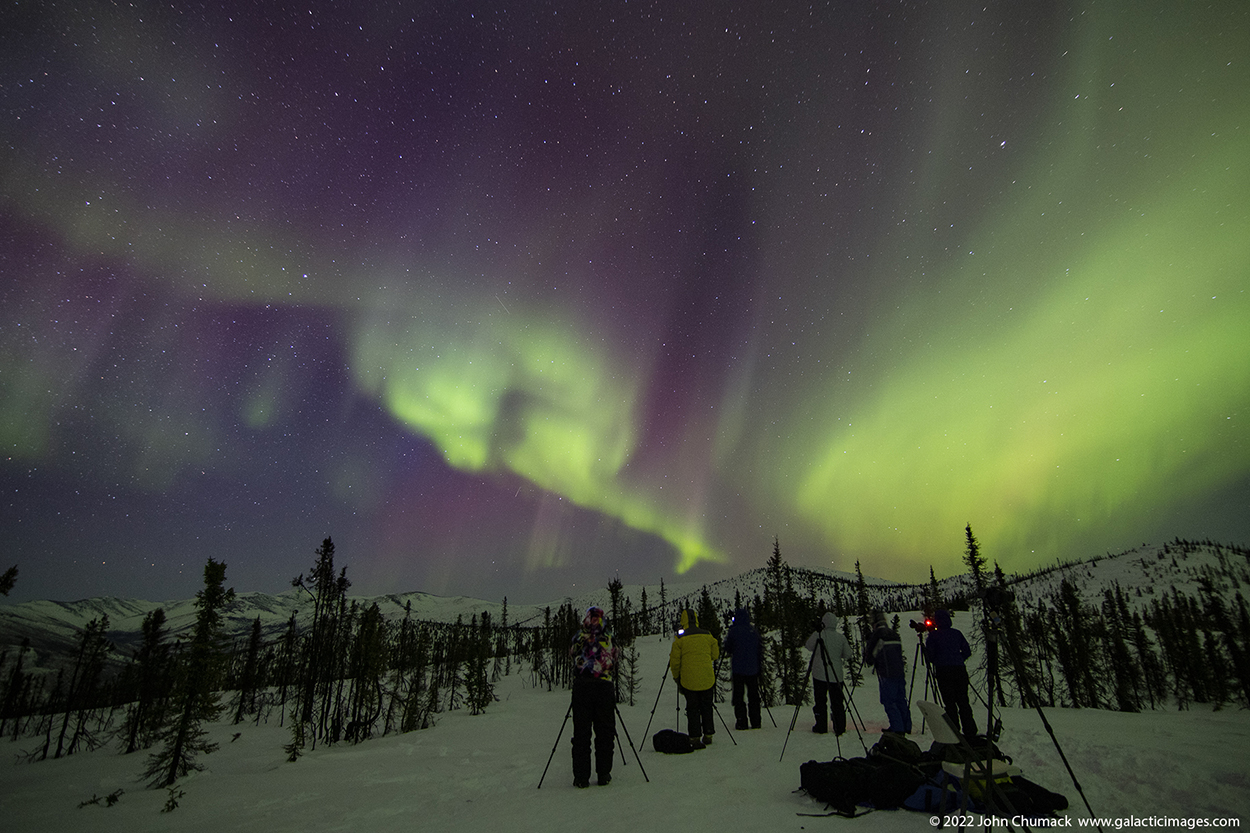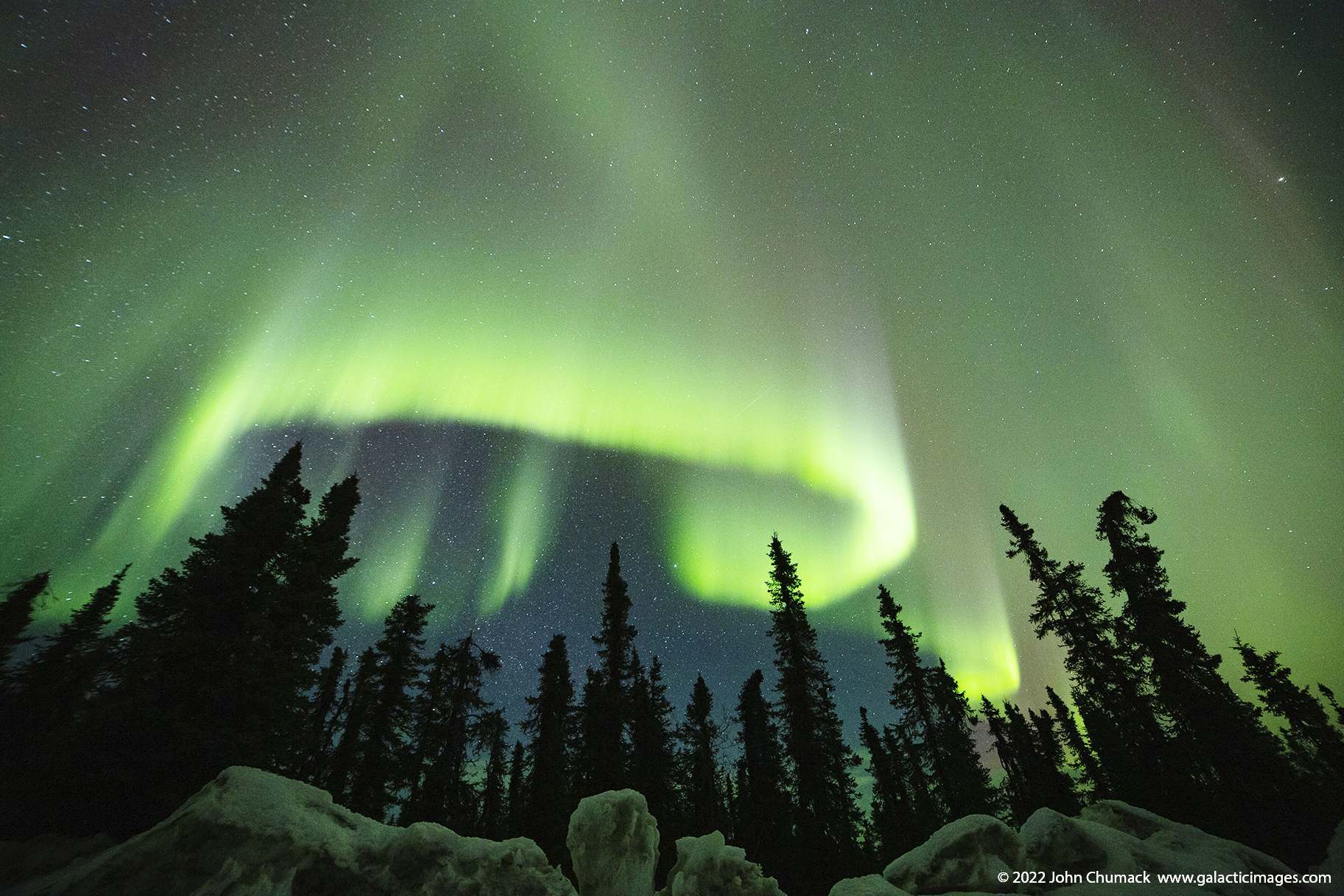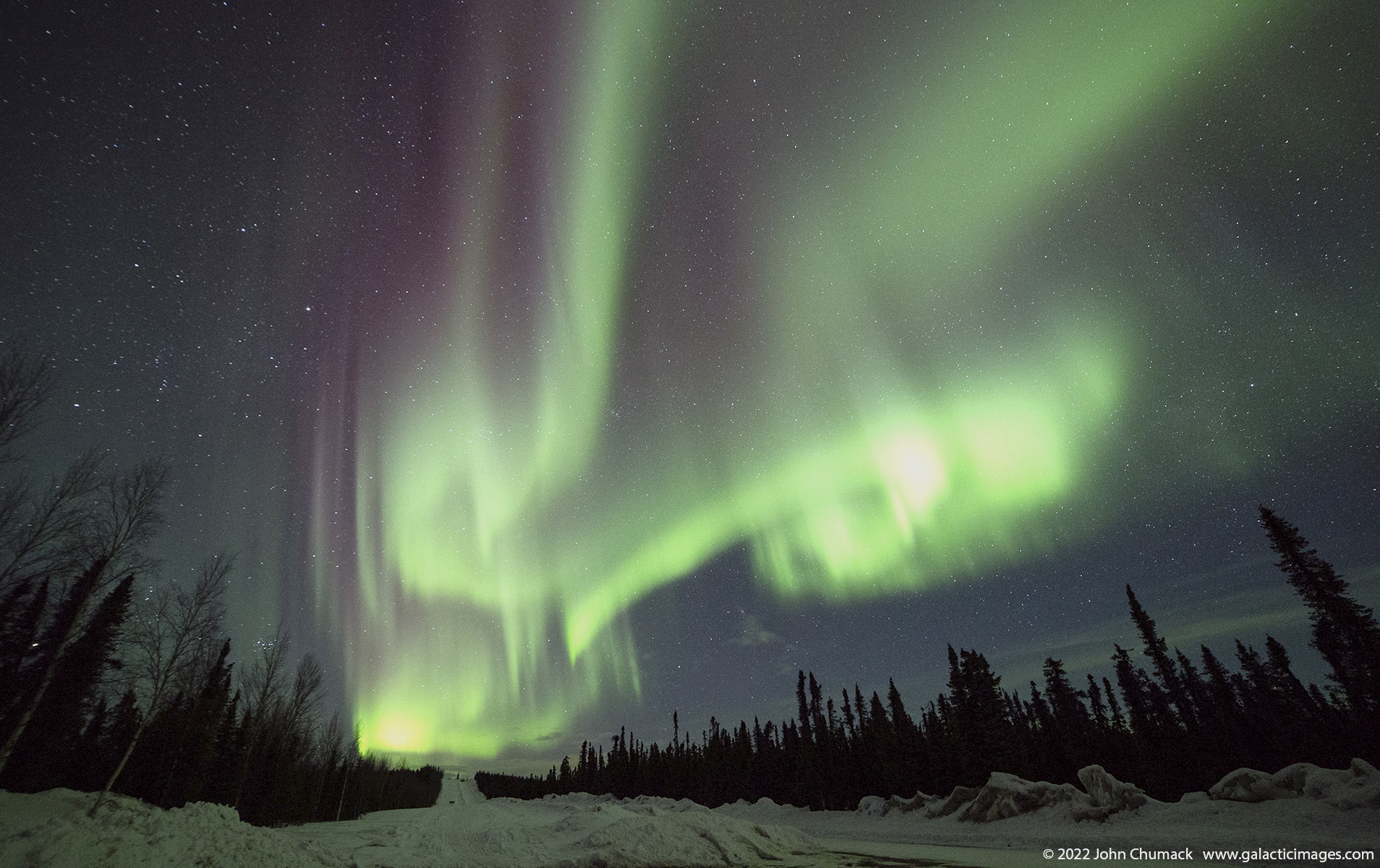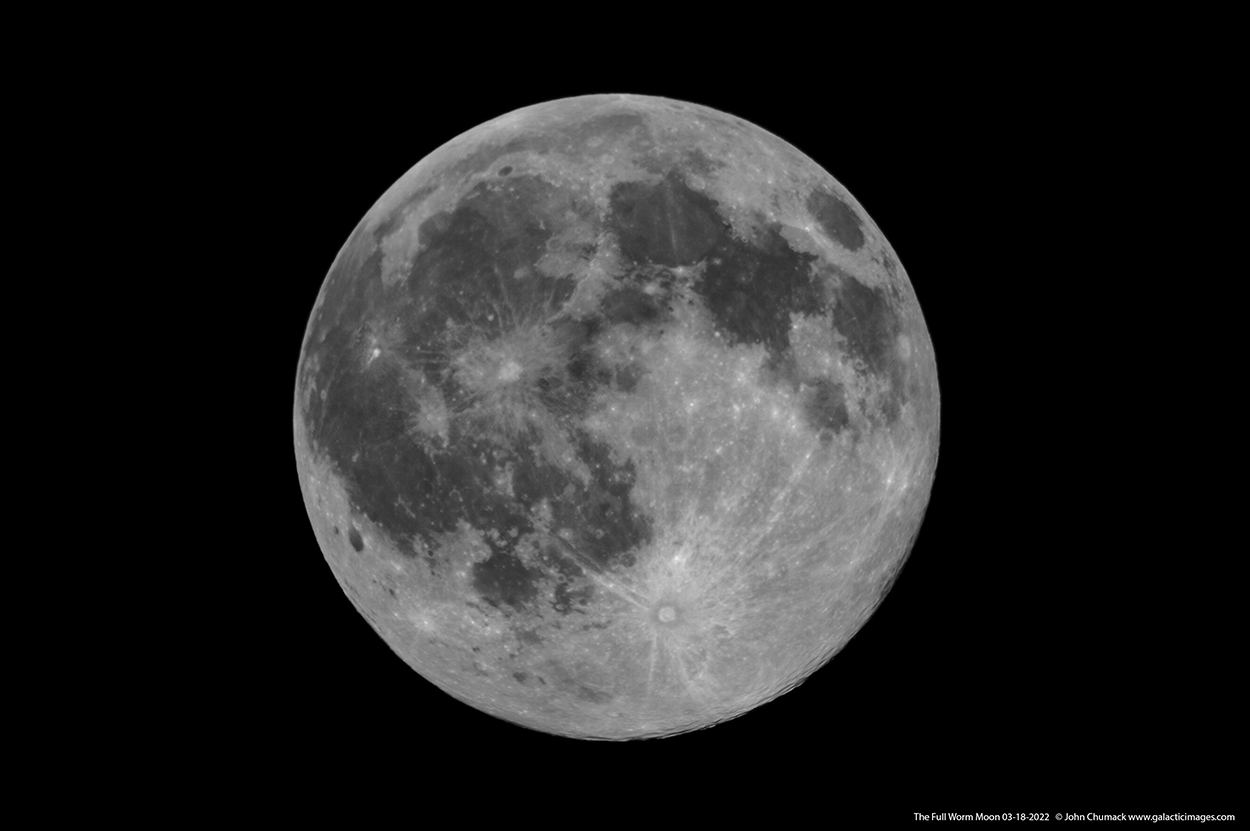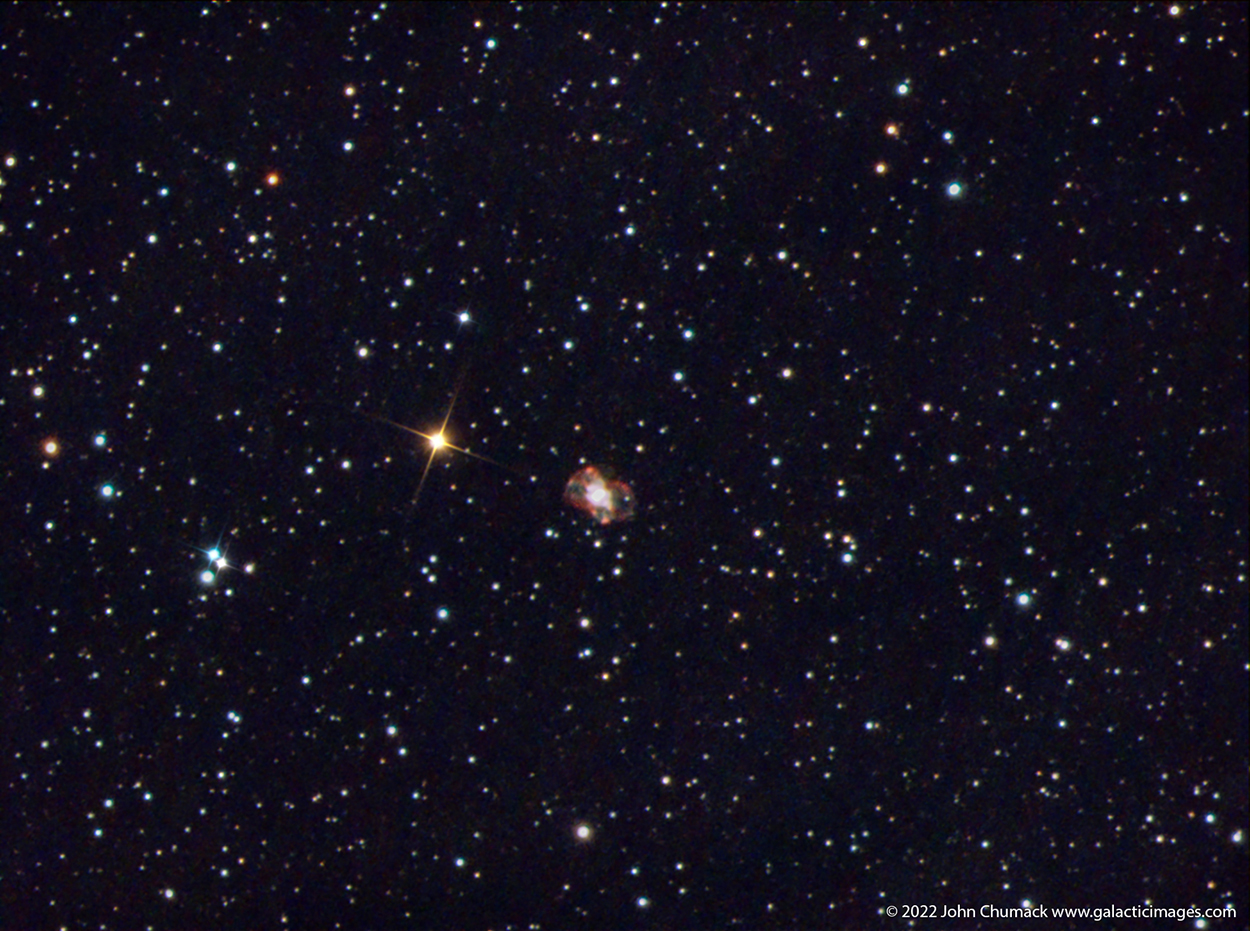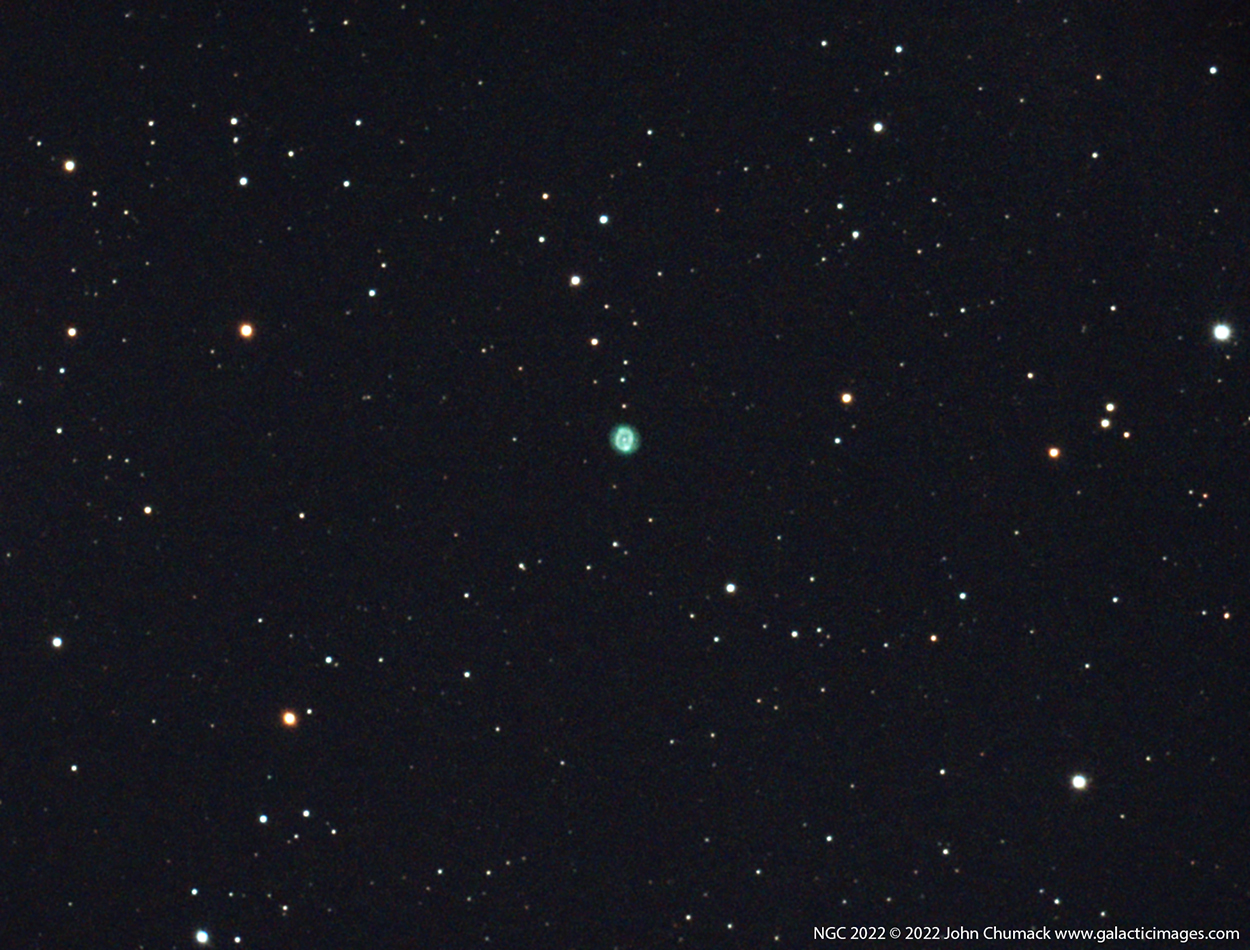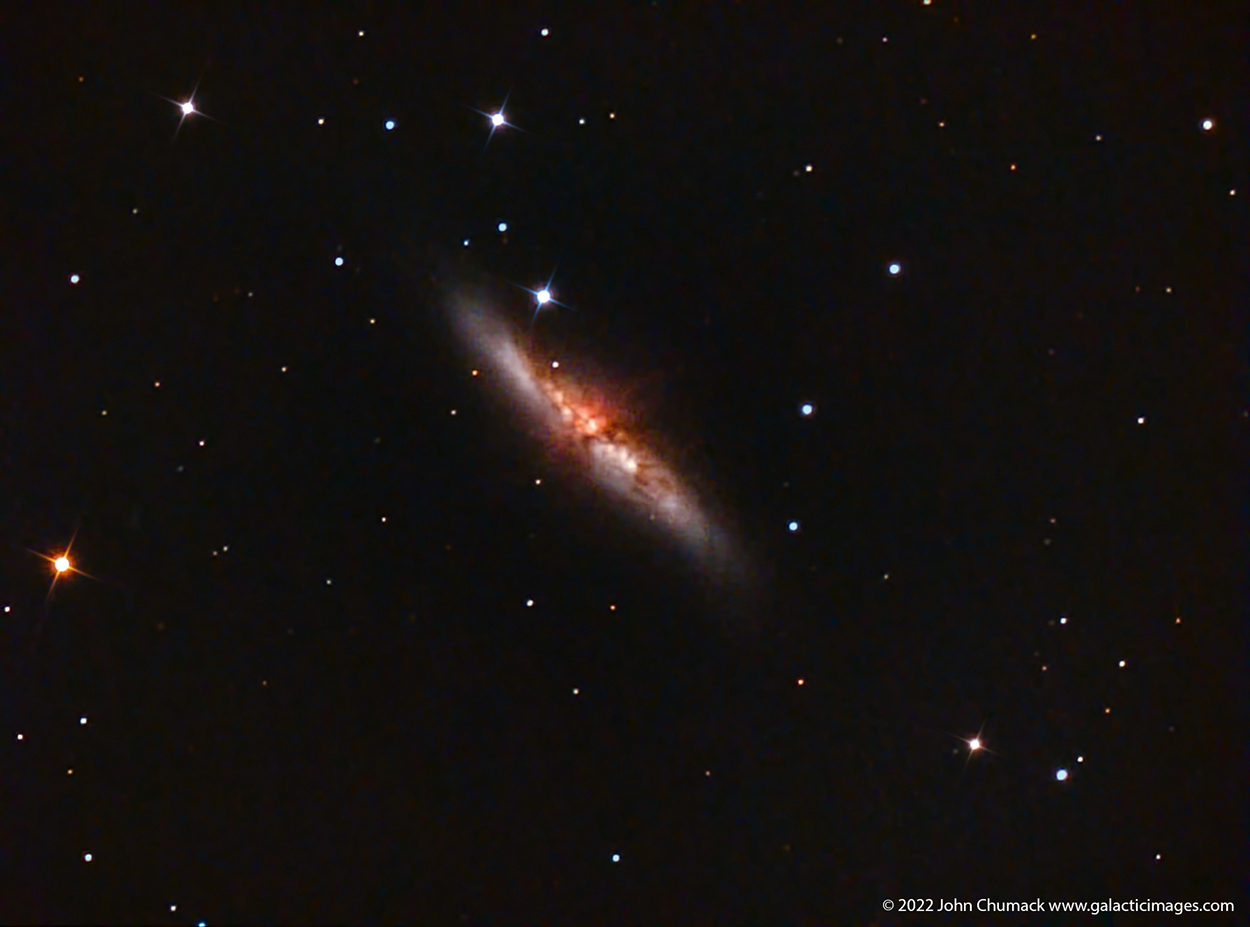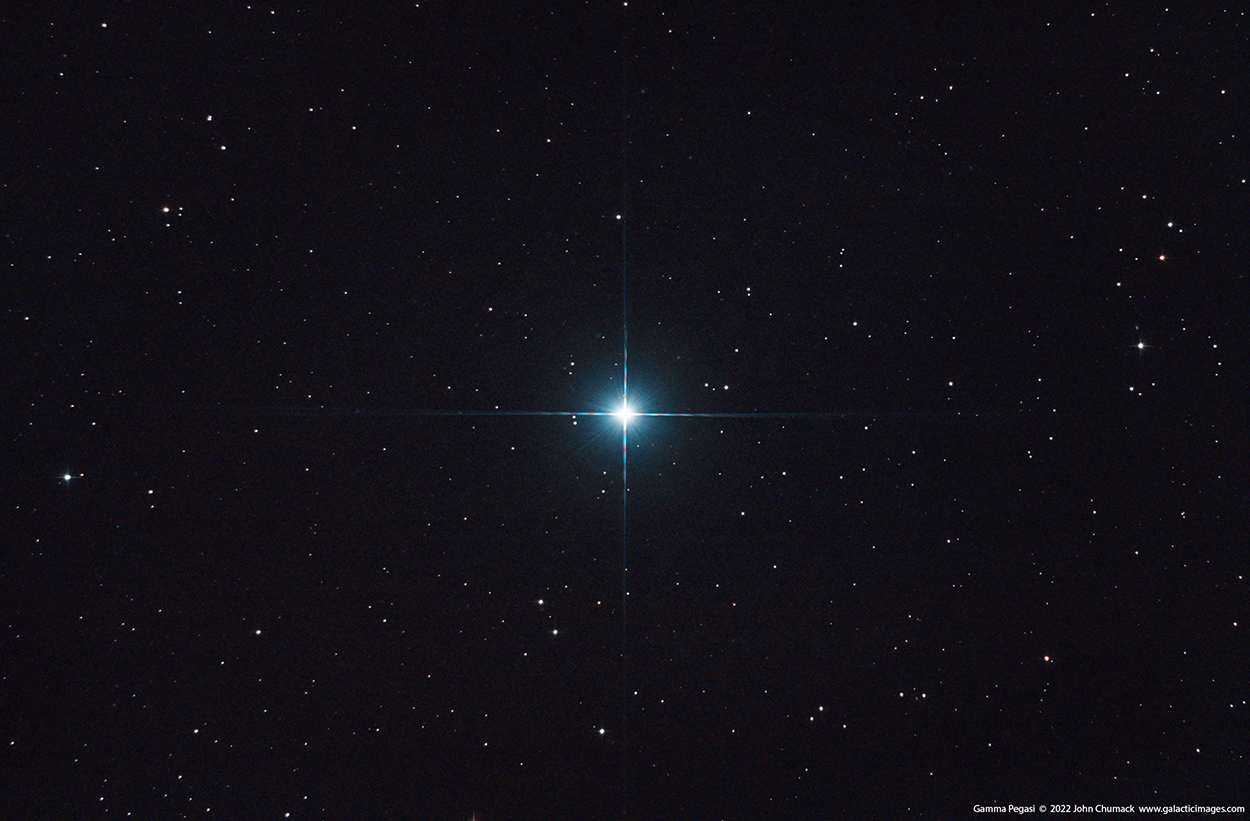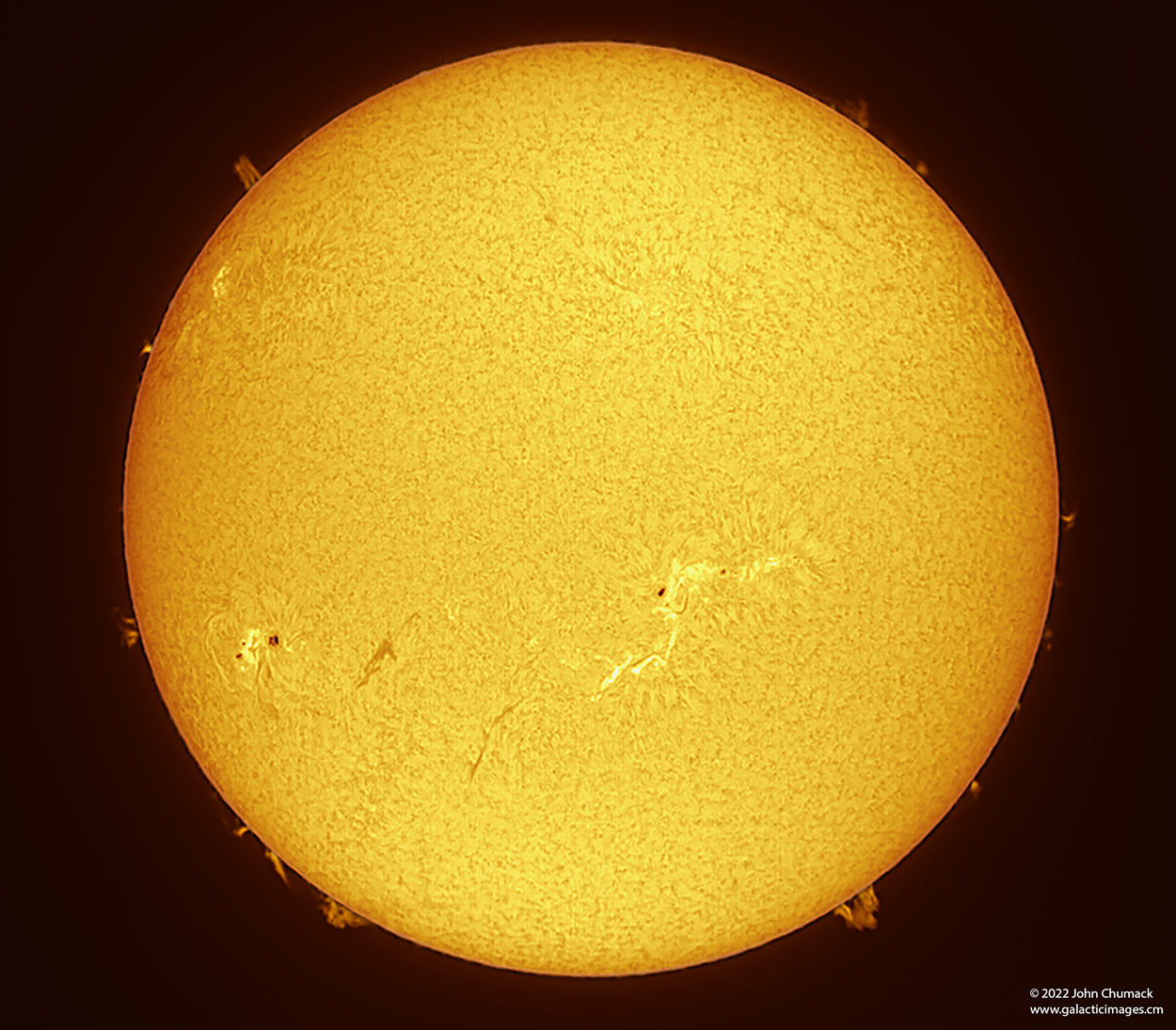Aurora Borealis In Alaska – Photography Workshop Crew 2022
The Aurora Curtain dances above Spruce Trees
The Aurora Curtain dances above black Spruce Trees North of Fairbanks, Alaska on 03-27-2022
Canon 6D DSLR Camera, 14mm lens F2.8, ISO 3200, 10 Seconds
Best Regards,
John Chumack
www.galacticimages.com
Aurora Borealis – The Northern Lights
Aurora Borealis – A Magnetic Horseshoe Crab
A magnetic Horseshoe crab or elaborate Head dress? Everyone will see something familiar in the shapes as the Earth’s magnetic field is constantly changing the shapes of the Aurora that we get at any given time. What do you see?
Yeah, after two years of Pandemic and not getting to conduct our Aurora Photography Workshop/Tour, this week I head back up to Alaska. I finally get to take another group to see and Capture the Northern Lights. Since we are in the Interior most of the time, my post will be intermittent, depends on the connections we have at each location, but when I get back in to either Fairbanks, or Anchorage, I will post pics when I can or when I get back to 3g – 5g civilization !. Solar activity has continued to be high, so I’m hoping we get good displays again while we are up there.
In the mean-time, here is one of the last shots I took back in 2019, while teaching our workshop.
To me the Aurora looks like a Horseshoe crab….or elaborate Head Dress.
Note: All the stars in the sky and Heated Yurt on the left, and the Great Andromeda Galaxy in the lower right. Canon 6D DSLR Camera, 14mm f2.8 lens, ISO 3200,
8 seconds exposure, 4-1-2019.
Best Regards,
John Chumack
The Full Worm Moon 03-18-2022
Here is the Full Worm Moon from the wee hours of the morning…through some haze in the sky
just before the heavier clouds rolled in around 4:00am.
6 inch Newtonian Reflector Telescope, Bisque MyT mount, QHY183M cooled Cmos camera, Gain 11 & Offset 16, a single 30ms exposure
via The Sky X camera control, shot from my backyard Observatory in Dayton, Ohio on 03-18-2022.
Best Regards,
John Chumack
www.galacticimages.com
NGC 2440 Planetary Nebula
NGC 2440 is a planetary nebula, a dying star, one of many in our galaxy. Its central star, HD 62166,
is possibly the hottest known white dwarf. The nebula is located in the constellation Puppis.
It was discovered by William Herschel on March 4, 1790.
He described it as “a beautiful planetary nebula of a considerable degree of brightness, not very well defined.”
The nebula is located about 4,000 light years away.
This is the last of my shots from my BTO(Bright Tiny Objects)week.
Captured with a ZWO 224MC Uncooled Cmos Camera & 6 Inch Newtonian Telescope, Bisque MyT mount, ASI Air WiFi to IPAD, 60 x 30 second
exposures stacked for a total of 30 minutes of Integration time from my backyard in the city of Dayton, Ohio.
Best Regards,
John Chumack
www.galacticimages.com
NGC 2022 Planetary Nebula in Orion
NGC 2022 (PK 196-10) is a planetary nebula in the constellation Orion, located at a distance of 8,210 light-years from the Earth.
It’s apparent visual magnitude is 11.6.
Probably one of the smallest Planetary Nebula I have imaged to date, yet still show some details with a small scope.
This is a double-shell planetary nebula with a wind-compressed inner shell(28 arc-seconds) and a more nebulous second shell extends to about 40 arc-seconds. The linear radius of the inner shell is estimated at 0.326 light years across. The central star of this nebula has a visual magnitude of 15.92.
Captured with my 6 inch F5 Celestron Newtonian Telescope, Bisque MyT Mount and a ZWO 224MC uncooled Cmos Camera as part of my BTO (Bright Tiny Objects) Week.
I used my ASI Air via WiFi to my I-Pad to captured 60 x 10 second exposures(Lucky imaging Method) 10 minute total integration time.
Taken on 02-27-2022 from my backyard in Dayton, Ohio.
Best Regards,
John Chumack
www.galacticimages.com
M82 Starburst Galaxy – taken with a ZWO 224MC
Messier 82 (also known as M82, NGC 3034, The Starburst or Cigar Galaxy) is a starburst galaxy approximately 12 million light-years away in the constellation Ursa Major.
A member of the M81 Group, it is about five times more luminous than the Milky Way and has a center one hundred times more luminous.
The starburst activity is thought to have been triggered by interaction with neighboring galaxy M81.
As the closest starburst galaxy to Earth, M82 is the prototypical example of this galaxy type.
Using my Uncooled ZWO224MC Cmos Camera and a Celestron 6 inch F5 Newtonian reflector scope, along with an ASI Air, Automated IPAD Sequencing Run for another shot from
My Bright Tiny Objects(Lucky Imaging) week.
Yes, this was done from my backyard in the City, Bortle 8, No LPR filters, no Auto-guiding, just basic tracking & stacking.
I captured this image with a Celestron 6 inch F5 Newt. Scope, Bisque MYT Mount, ZWO 224MC Uncooled Cmos Camera, ASI Air App acquisition, via Wifi to IPAD,
No Auto-guiding, no filters, just “Lucky Imaging Method”(short exposures stacked) 100 x 30 second exposures, 50 minute total integration time
from my Backyard Observatory in Dayton, Ohio on 02-20-2022.
Best Regards,
John Chumack
www.galacticimages.com
Gamma Pegasi – Algenib
Simply Beautiful, but often Overlooked!
Gamma Pegasi (γ Pegasi, abbreviated Gamma Peg or γ Peg), formally named Algenib, is a star in the constellation of Pegasus,
located at the southeast corner of the asterism known as the Great Square.
The average apparent visual magnitude of +2.84 puts this star at fourth place among the brightest stars in the constellation.
This is a large star with almost nine times the mass of the Sun and close to five times the Sun’s radius.
The distance to this star has been measured using the parallax technique, yielding a value of roughly 390 light-years(120 parsecs).
Gamma Pegasi has a total luminosity of ~ 5,840 times that of the Sun, which is being radiated from its outer atmosphere at an effective temperature of
more than 21,000 K. At this temperature, the star glows with a blue-white hue.
Gamma Pegasi is also a Beta Cephei type variable star.
Captured with my 12 inch diameter F4 TPO Newtonian Telescope, Bisque ME Mount, & HAP Modified Canon 6D DSLR camera, ISO 800, 6 minute exposure on 01-06-2022
from my observatories in Yellow Springs, Ohio. The Sky X, Canon Utility Capture, Pixinsight, Adobe CS 2022.
Best Regards,
John Chumack
www.galacticimages.com
The Sun – Full Active Disk in Hydrogen Alpha Light – 03-05-2022
It is so nice to see the Sun with so much activity again, with at least 3 Active Regions,
Filaments, bright Plages, Sunspot groups, and plenty of Prominence activity all around the Limb.
I captured this Full Disk Active Sun in Hydrogen Alpha Light on 03-05-2022 from my backyard in Dayton, Ohio.
Lunt 60mm/50F HA Solar Scope, Bisque MyT Mount, QHY5IIL Cmos Camera, Fire-Capture SER file, 4.2ms exposures,
495 Frames stacked in Registax6.
Best Regards,
John Chumack
www.galacticimages.com


